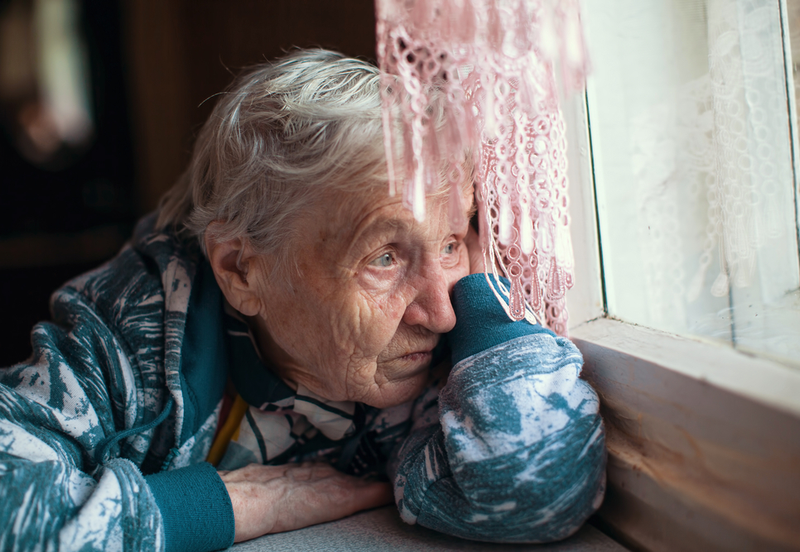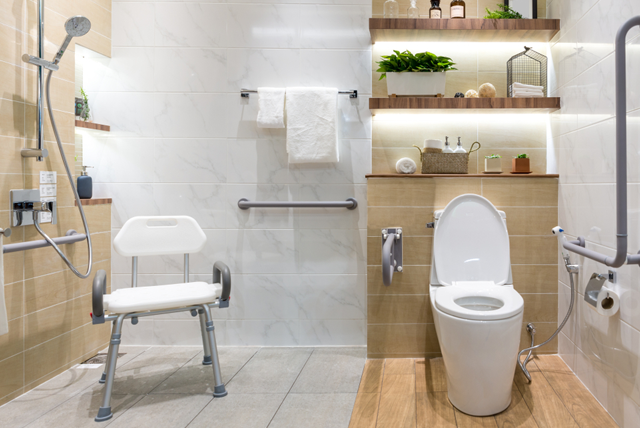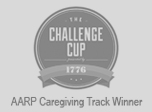Sundowning is a set of behavioral problems that occur during the evening or nighttime in some individuals with dementia. The condition can be distressing for patients and caretakers alike, as it can involve intense and difficult-to-deal-with feelings, like hostility, agitation, confusion, sadness, fear, paranoia, and hallucinations. Some concerning behaviors may arise, too, like pacing, persistent questioning, rocking, crying, screaming, and sometimes hostility and violence. Learning how to handle sundowning can be one of the biggest obstacles in learning how to deal with someone with dementia in a way that is caring, kind, and patient.
Fortunately, certain behaviors can improve many of the symptoms of sundowning. These tips for caring for a parent with dementia who is sundowning can help you to prevent sundowning or manage it in a way that causes less stress for you and your loved one.
Continue reading
Beginning the search for a home care provider can be overwhelming and stressful. There are a number of factors to consider such as reputation, cost, and the type of care you need. Additionally, every family looking for home care services has a unique situation and what is best for someone might not be the right option for someone else. Here are some steps you can take as you navigate the search process in order to find the right home care providers to fit your needs:
Continue reading
Caregiving can often be an incessantly demanding job on every level, requiring taxing hours of work and often much of our emotional attention. Many caregivers may lose the ability to properly take care of their own day-to-day needs as their time is split between their role as a caregiver and the other important roles in their life. Even the most rewarding instances of caregiving can become tiring after a while, and many caregivers can head straight for burnout if they go too long without being able to lead a balanced life for themselves.
Fortunately, a respite care plan is a concept that aims to prevent this sort of exhaustion-fueled burnout, and it can be achieved with some cooperation and coordination.
Continue reading
Acting as the primary caregiver for a loved one or family member can be emotionally and physically taxing. It is not uncommon for you to feel as though your own well-being has fallen to the wayside as you prioritize the care of your loved one and navigate additional stressors such as financial problems, social isolation, and family conflict. This may lead to caregiver burnout and further deteriorate your ability to care for your loved one.
However, your health and the health of the person you are caring for are not mutually exclusive. Instead, taking care of yourself is one of the most important things you can do while acting as a family caregiver. Here are some simple self-care tips to cultivate your emotional and physical wellbeing while caring for a loved one:
Continue reading
Whether you are a senior facing a terminal illness, or a person preparing for the natural end of his or her life, advance care planning can help make sure your medical care aligns with your values and wishes. In the event where you’re incapacitated or too sick to make your own decisions, advance care planning documents can express to doctors and other healthcare providers what treatment you do or do not want to receive. They can also legally designate a person to make medical decisions on your behalf, whether it be a family member or friend who understands and can communicate your care preferences and beliefs.
Advance care plans can be developed at any time, and should be revised and updated in accordance to a person’s health and life circumstances. For seniors who have a terminal or chronic illness, their advance care plans will likely revolve around their disease’s trajectory and how their medical condition progresses overtime. Creating a comprehensive advance care plan will alleviate the stress that comes with sudden changes to a person’s health, and help outline what medical treatment he or she wishes to receive during the different stages of their disease or illness.
Discussions surrounding end-of-life care are easy to avoid, but having advance care documents will put you in the driver’s seat of your own health. If you or a loved one is in the process of creating an advance care plan, here are some of the important documents you should include:
Continue reading
According to the World Health Organization, around 50 million people worldwide have dementia, with nearly 10 million new cases every year. Contrary to popular belief, dementia is not a single disease, but an overarching medical term used to describe a variety of disorders and injuries caused by abnormal brain changes. Alzheimers is the most common form of dementia, accounting for 60 to 80 percent of cases.
Alzheimer’s disease and other forms of dementia typically causes a progressive decline in a person’s cognitive ability. Depending on the stage of the disease, their memory, reasoning and judgment, sense of time and place, balance, communication, and other cognitive skills can become severely impaired. A person living with dementia may forget how to do basic tasks like turning off the water or using the phone, which affects their ability to live independently and poses a serious safety concern — especially in emergency situations.
Taking care of a loved one with Alzheimer’s Disease or other forms of dementia is a multipart process that likely requires professional assistance. However, there are a number of home adjustments you can make to maximize safety and prevent potential injuries. To ensure your loved one’s living spaces are safe and easy to navigate, consider these 4 safety tips to creating a dementia-friendly home environment:
Continue reading
As you or a loved one grow older, it is important to plan for potential risks and injuries that may accompany aging. Falling, in particular, is the leading cause of injury among elderly people, as medical conditions such as reduced vision, loss of balance, and slower reaction times make seniors more susceptible to falls.
According to the Centers for Disease Control and Prevention, one out of four older adults will fall in the United States each year, and about “3 million older adults are treated in emergency departments for a fall injury.” However make no mistake — falling is not a normal part of aging, and can be preventable with a few easy adjustments to your home and day-to-day living routine. To start planning how to prevent fall injuries for seniors, consider these 4 simple steps:
Continue reading
In planning their future, it has become increasingly common for older people to stay in their own homes rather than move into senior living communities. According to a 2018 AARP survey, 3 out of 4 adults ages 50 and older want to remain in their homes as they age, but only 46 percent believe that they are able to do so. Medical conditions that arise from aging, such as balance issues, reduced vision, and decreased mobility that make senior living challenging for those without the proper care and assistance.
Fortunately, with the right help and modifications, senior individuals can transform their living spaces to better accommodate age in place living. According to the United Disabilities Services Foundation, aging in place design is rooted in principles of universal design, which “focuses on creating environments that are safe and comfortable for people of any age.” By incorporating universal design into their homes, senior individuals are better prepared to face the challenges and health ailments that accompany aging.
Aging in place is not a decision to take lightly. It requires a personalized and comprehensive plan that addresses all potential challenges that a senior individual can face. If you or a loved one is considering aging in place, here are 7 universal design-based home modifications you can start with to prepare for safe and comfortable senior living at home:
Continue reading
Most seniors are concerned about changing their lifestyle and losing their independence. So, it's important to find a senior community that meets their needs, while keeping their independence. Two popular options are assisted living and Continuing Care Retirement Communities. Because both housing types provide daily living support, it can be difficult to choose which one is best for you. To make the best choice, you need to know the differences between these two housing types. A guide to assisted living: This housing type provides care and daily living support offered to seniors in a comfortable and residential setting. Support services are customized to the needs of each resident, providing them access to a wide range of assistance when needed. Services include the following:
Continue reading
Discovering the right senior living choice is about getting some knowledge about your needs and deciding the types of services that best fit those needs. Two of the most mainstream choices are independent living and assisted living. Here's a quick manual for each of these choices to assist you with making an informed decision.
Continue reading
Medicare is a health insurance program funded by the federal government. It is basically the same everywhere in the United States and run by the Centers for Medicare and Medicaid Services. This program offers health insurance benefits to people 65 or over, and to anyone under 65 who has been collecting Social Security Disability for at least 2 years or has a serious disability, such as kidney failure. There are several parts to Medicare. Part A covers institutional care, such as hospital costs, rehabilitation, home health care and hospice. Part B covers medical expenses including doctor's bills, outpatient tests, lab services, and home health care. To get Part B coverage, there is a monthly charge to the patient and a deductible is also applied. For people that are eligible for Medicare, they can pay extra for Medigap, a private health insurance policy that covers services that are not covered by Medicare, such as deductibles, co-payments and prescriptions.
Continue reading
Advance directives are a way for you to give consent to the treatments that should or should not be given in the event a medical situation arises which requires a decision, and you're unable to speak for yourself. They can also be used to appoint someone to make decisions for you. Advance directives give you a better chance of having your wishes carried out, even if you can't speak to your doctors about your wishes. Also, advance directives take pressure off family members if decisions must be made about medical care and you are unable to communicate.
Continue reading

























